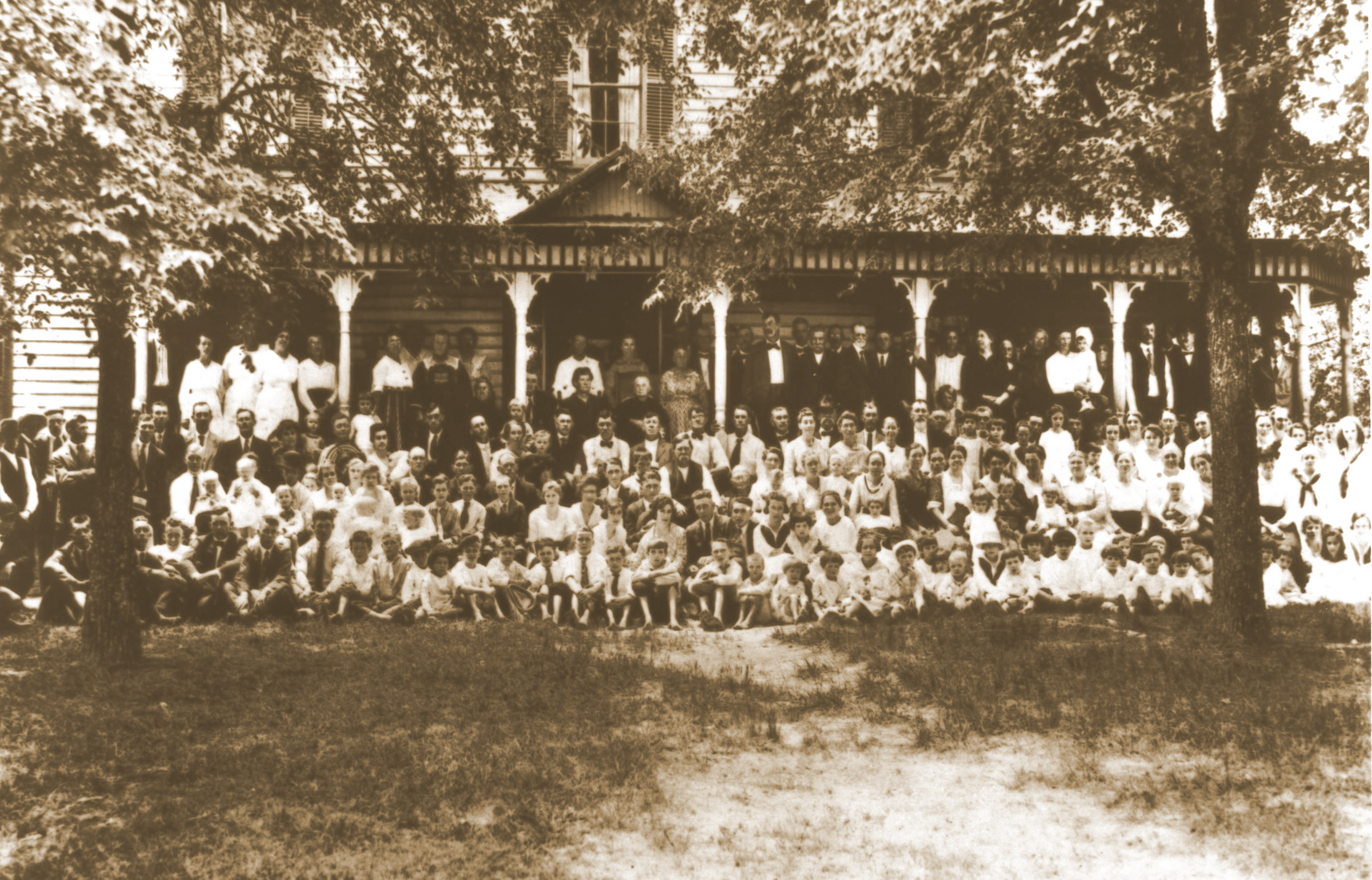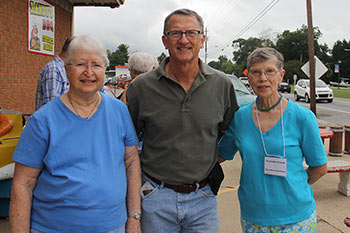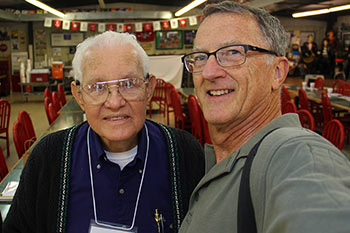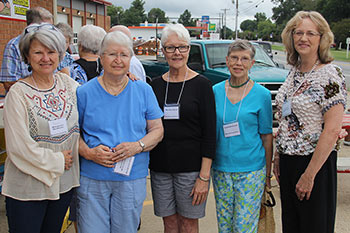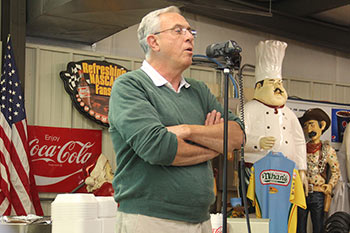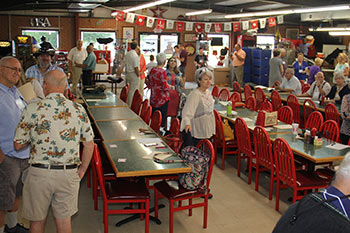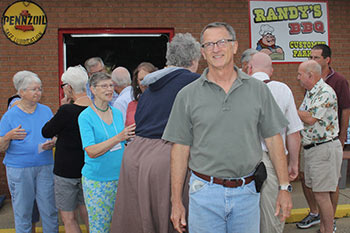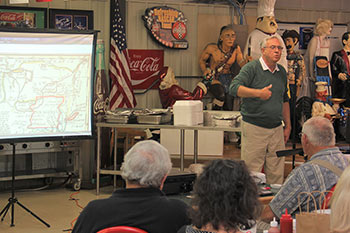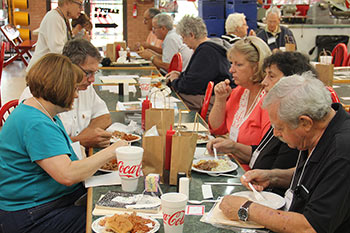GARY FREEZE
Personal, But Professional: The Context of Me and Family
So, was I born to be a historian, especially one that focused on small frames of reference? It seems such, as I ponder my personal and professional past, particularly in relation to my kinship to Lippards across America. What follows is a fragment of a memoir—more a ramble than a narrative, really—that meanders from family to farm to factory to stacks of books to scraps of manuscript, to the probing of the purpose of memory itself. And it is an account of how I came to be involved in this innovative genealogical exercise.
I grew up in the heart of the original Lippard homestead in Iredell County, North Carolina. My mother Sudie was a Rumple by name, but most often a Lippard by disposition. (I had no idea what that meant as a child, but it was apparent to me even then that her identity was tied up with that heritage: without my knowing what heritage meant, of course.) My father Richard tried to till the Lippard land after service in World War Two, but went to work in a furniture factory after I came along, and my mother no longer worked in the nearby Troutman Shirt Mill. Although I was an only child, I had cousins nearby, Freezes on one side of my house, Rumples on the other, who were equivalents. So, I seemed to be one of many things—rural nonfarm in my demographic, yet with the farm nearby, a solo child with near-siblings nearby, a kid interested in everything—but with one centrality: a consciousness of that which is historical and historic.
That consciousness came early. Although I cannot detail my first actual memory, I can recall the lineage of small events that suggest I was into this stuff from the start. At least since I could read. I remember well a fragment from about the time I was six, maybe seven, when I am at a hospital waiting room—it could have been for a family member in either Statesville or Hickory—and I picked up a child's book about Thomas Jefferson. The part of the book I can recall vividly is the story of the burning down of Jefferson's childhood home Shadwell and the saving of the youngster's violin. Then, there is the book I read in the second grade, title long forgotten, where a boy and a girl take a tour of their tiny town, with its school, fire station, post office, store, and brown church and white church. The importance of exploring, discovering, and taking the measure of one's community has stayed with me ever since. This process that began at a child's level was to animate my most fruitful endeavors in life, just as Jefferson was to provide the basis for much of what I believe about history, and the potential to be gleaned from historical understanding.
That doesn't mean I was selective about what I learned about in history. I read early and widely, often biographies, and like most Baby Boomer boys, a lot about the Civil War. However, I had from an early time in school a penchant for the small scale. My personal record for number of times I checked out the same book (over and over in the fourth grade) was for Holding the Fort with Daniel Boone, a rip of a read about Boone's efforts to save his "hometown" from the British and the Shawnee during the War for Independence. I remember being fascinated by the configuration of Boonesborough as much as the action sequences.
A similar fascination took hold of me in the fifth grade. One winter day I made the first great intellectual transition in my life. I came out of the children's section of the Statesville Public Library and crossed over its wide entryway to the "new books" shelves. There I found The Cowpens-Guilford Courthouse Campaign and proceeded to get a special checkout as an adult. That book became my runner up for repetitive reading. What I learned that day was that even my localities—Statesville, Iredell County, the North Carolina Piedmont—had significant stories of their own, in other words, their own contributions, to the bigger picture of national history. (Both armies crossed my county on their way to worldwide significance, in that these actions helped resolve the American Revolution.) Much of my later professional scholarship was a projection of that essential idea. Small things are the building blocks of great events and eventualities.
Anyway, that pique made me pay more attention to the genealogical interests of my cousin, Harriet Rumple Schroeder. Harriet remembers that in the same year that I read those two books cited above, 1962, I was first brought to Washington, D.C., to visit her family in suburban Maryland. One of the days we did the sights, which highlight for me was the visit to the old Smithsonian Institution, with its smorgasbord of heritage artifacts. Harriet has recalled that I was very slow to go through it all, wanting to read everything. My main memory is looking up to see the Wright Brothers plane suspended from the ceiling. (Note that locality had the greatest impression, again.)
So, over time, I talked with Harriet about family members from the past, traded family stories—what few I learned—and became fascinated that the family farm went back to the 1790s, that my ancestors were German immigrants, and that they had lived in Rowan County before they came to Iredell. When called upon in high school to do a senior English paper, I chose "Before They Came to Iredell: The Lippards in Colonial Rowan County". At least I think that is the whole title; I cannot, decades later, find my copy. In the first paper I ever wrote, I used what Harriet had learned, journeyed to Salisbury on my own to do work in the local library, and tried my best to connect the local with the universal. That paper cemented my consciousness that historically, at least, I identified most with being a Lippard. Little did I know that topic would recur in my scholarship to the present project, or that I would end up in Salisbury at Catawba College for the balance of my career.
During college I seldom got a chance to keep my assignments localistic, but I did develop an aspiration to be a small-town journalist, which I did summers and holidays for the Statesville Record & Landmark. I worked for it one more year after graduation, then helped Iredell County with its national bicentennial celebration, including oversight of two commemorative histories. One was Homer M. Keever's Iredell: Piedmont County, at the time the most comprehensive local heritage study in North Carolina. I was Homer's proofreader, discussant, and eventually, even the pasteup artist for the book's assembly at a local printery. That whetted my appetite further for knowing more about my locality, so I spent another year working for the state department of history and archives on a historic architecture survey of Iredell's old buildings. (These included, by the way, about a half dozen structures that would later teach me volumes about life among the Lippards in Iredell.) That experience of hands-on history inspired me to take the plunge and go to history graduate school in 1977. My second great intellectual transition.
I had little time during graduate school for Iredell County heritage, but there I did hone my particular set of skills by turning to another county, Cabarrus, to learn more about the process of industrialization, by examining the early history of their cotton mills. I also became even more of a localistic historian by applying the case study approach to the interpretation of one particular factory community, the Odell Manufacturing Company. (There was one Lippard, Jerry, from Cabarrus, who was part of the story.) In fact, if you were to look at key parts of my dissertation, the approach was just a more elaborate and theoretical application of what I had learned about a little place back in the second grade.
One of my research innovations developed in a labor history seminar did end up becoming one of my first scholarly publications. In the short essay, "What the Agricultural Census Can Teach the Genealogist", published in the North Carolina Genealogical Journal, I explained how the social connection to material conditions—e.g., the size of the family fields compared to those of the neighbors—can augment our understanding of our ancestors. After all, what does it mean to say your ancestors owned 100 acres, if everyone around them owned 10 or 1,000? Were they poor, rich, and how can you tell unless you use the statistics that you can acquire to decide their socio-economic condition in a particular time and place? In some ways, that short piece set me up to do what I would later do to understand the Lippards using a relativity perspective, as applied in our latest work on the family here.
From the time I attended the 1988 reunion in Philadelphia—the same year I got my Ph.D.—I began to apply my more professional skills to the broader understanding of family heritage and history. I brought that to the small presentations about the early Lippards in North Carolina at the reunion held in Statesville. My localistic perspective grew in complexity with land deed research, including the use of triangulation to locate where particular plots of land were. That work led eventually to the locating of the original John Lippard homestead in Cabarrus County (to which I took a subsequent reunion to see an old barn on the property). It also brought me face to face with a return to my origins: literally the property boundaries and transfers that "tell" the history of the very land in Iredell where I grew up. Those findings appear in the essays that follow this personal introduction.
Perhaps the most innovative thing I ever did for the family was the reunion field trip to the Civil War battlefields of Virginia, Maryland, and Pennsylvania, which almost 100 Lippards attended in 2005. Here I combined the background I knew from my collegiate seminar on the war to the actual travails and tribulations of Lippards who served in the Army of Northern Virginia. No other family, to my knowledge then or since, has so successfully combined the fellowship of reunion with such an educational field trip. It was one of the finer weekends of my whole life.
I should note that Lippards continued to pop up in my professional scholarship through the years. In particular, a set of them who moved first from Iredell to Alexander County, then to Catawba County became the bootleggers I wrote about in the second volume of my local history trilogy, The Catawbans. These three volumes, totaling more than 1,000 pages, became the core of my scholarly contributions to American historiography (really a continuation of the theme of county history being about everyone, as taught me by Homer Keever). And, the familial connections never quite ceased to occur: I made the analogy that the vague moonshiner stories my mother told me about my neighborhood in Iredell meant that my neighbors had been suppliers to those same Catawba County traffickers.
All along the meandering paths of this odyssey I have relied upon others, particularly Harriet, to do the actual genealogies. Who was begotten when and where was not part of my milieu; rather, what I could do to speculate on the lives all of them lived was to be my mode. Combining the specifics of lineage with more generalized lines of logic about life in the past is one of the distinctive features of this broad study of the Lippards, a distillation of my life's work and a validation of my first principles gained in childhood. My hope is that my devotion to these methodologies has bettered the study of our ancestors for all of us. And made me a better Lippard.

